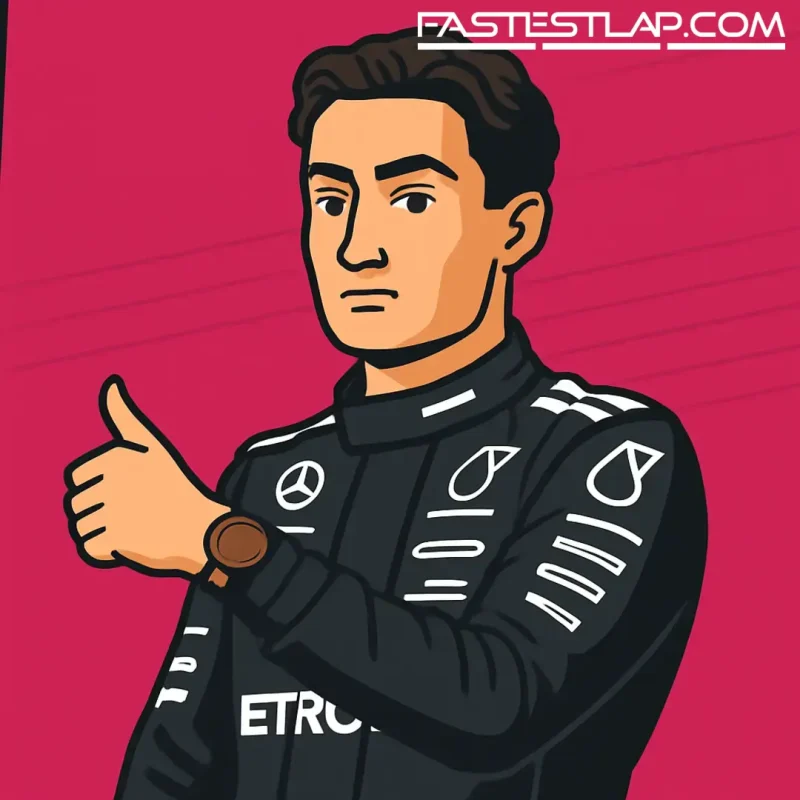George Russell isn’t waiting for a title shot. He’s training for it.
On the eve of another sweltering Singapore weekend and with his 150th Grand Prix looming on the horizon, the Mercedes driver cut a pragmatic but bullish figure about where his career is headed. He’s 27, already lived through the wrong side of a timing play — graduating from Williams into a Brackley team just as the ground shifted in 2022 — and he’s not hiding from the scoreboard. Title fights have come and gone elsewhere. His hasn’t. Yet.
“I feel ready to fight for a world championship,” Russell told The Straits Times. “I felt ready for a long time. But there can only ever be one driver and one team. And it’s very rare you see two drivers from two different teams fighting for a championship… but you should never lose hope.”
He doesn’t do self-pity. He does process.
“I’m fighting every single day because I don’t know when my chance will come. Maybe it starts from this weekend in Singapore… maybe it’s 2026, maybe it’s 2028. But I have no doubt my time will come. I like to look at the here and now and the short-term future and I know that if I do everything right today, and everything right tomorrow, and everything right the day after, my long-term goal will be achieved.”
It’s hard to argue with the arc. Since stepping into Mercedes, Russell has been quick, rugged in wheel-to-wheel scraps and consistently in the mix on Sundays. What he hasn’t had is a car that lets him bully a championship over 24 rounds. While Max Verstappen stacked up multiple crowns and younger rivals have enjoyed purple patches, Russell has been living in the margin — the relentless pursuit of gains that add up to a window when regulations and form finally align.
Inside Mercedes, “window” is spelled 2026. That’s when Formula 1 tears up its rulebook again, with a fresh power unit formula and a new era of car concepts around it. The last time the sport rewired the engines, in 2014, Mercedes grabbed the front and didn’t let go for years. That memory lingers.
“Even just yesterday, I was driving the simulator with the 2026 car and the 2026 engine,” Russell said. “It’s a huge opportunity for us as Mercedes, every team. We recognise we cannot win the championship this season. We’re of course fighting to finish second, and that is our objective. But the truth is, we want to be all in for 2026 and that’s what we’re aiming to do.”
That line will split opinion. There’s always risk in pivoting early — development time is a currency every top team guards jealously — but there’s also a certain ruthlessness in admitting where you are and where the biggest return lies. If you’re Russell, hearing your team speak that language sounds a lot like commitment to your window.
In the short term, there’s still business to handle. Singapore is a driver’s sauna and a strategist’s Sudoku, the kind of race that rewards temper and precision. It’s also become a litmus test for whether a car can generate grip and confidence at low speeds under heavy heat soak. Mercedes have improved across 2025, but they haven’t erased every weak spot. Russell thrives on the mitigation game.
The other thing about Russell: he’s never looked like a driver waiting for a saviour. The energy is more brick-by-brick. He’s put dents in qualifying laps that should’ve belonged to faster cars. He’s converted messy Sundays into strong points. He’s taken the bruises and kept the same cadence in his answers: do the right things today; the long game takes care of itself.
It doesn’t guarantee anything, of course. Title shots in modern F1 are fewer, shorter and more ruthless than ever, and you can be ready and still miss the bus. But you can also be ready when the door finally swings — and few on the current grid look more prepared for that than the guy in the silver and black who keeps talking about tomorrow while driving the simulator for next year and beyond.
Russell’s window is coming. He’s making sure he’s first through it.




